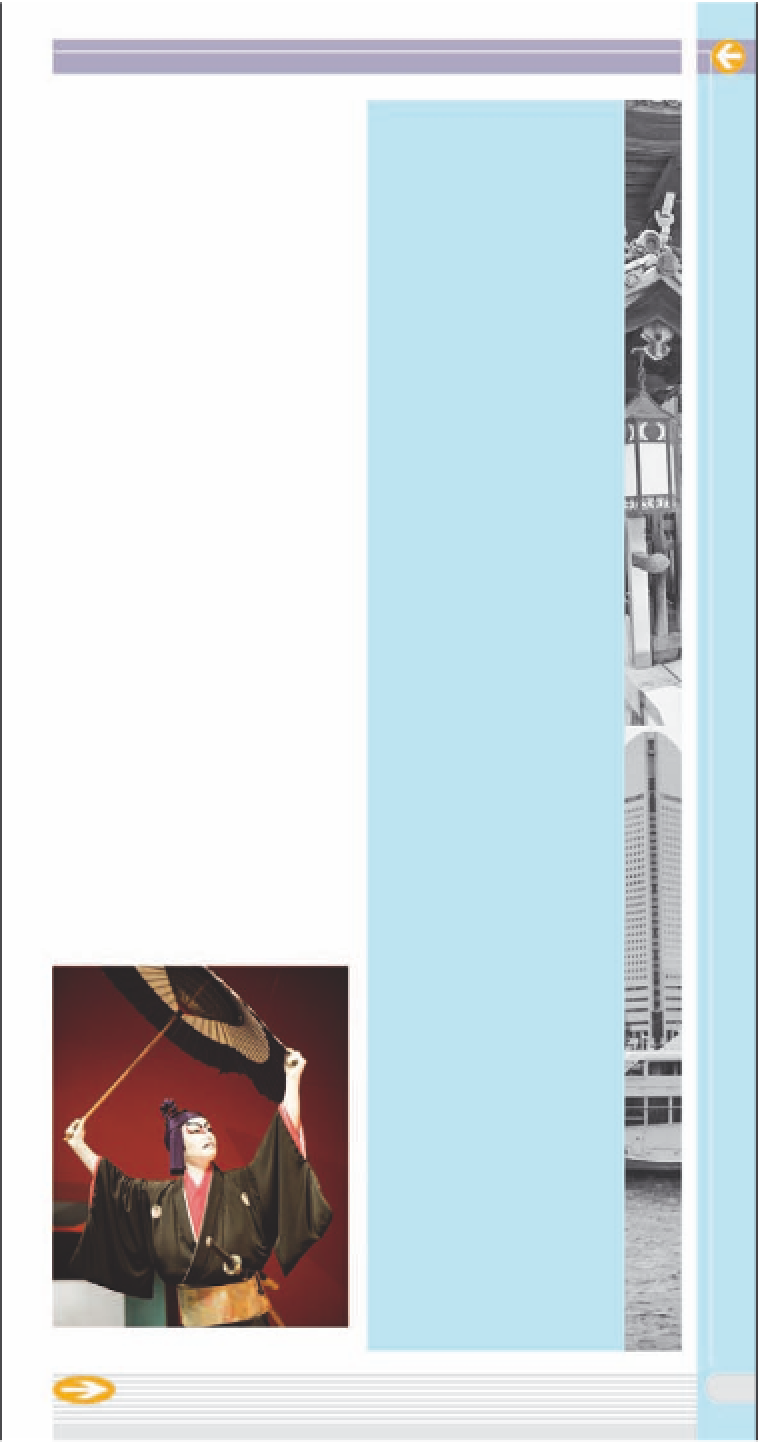Travel Reference
In-Depth Information
(
Edo-Tokyo Open-Air
Two Days in
Kamakura
Day 1
Exiting at
Kamakura
Station
, take
Komachi-
dori
, a street with cafés
and specialist stores.
Return to the station area
and take
Wakamiya-Oji
,
a street selling local
products. At the end of
the road,
Tsurugaoka
Hachiman-gu
, Kamakura's
premier shrine, is dedi-
cated to the god of war.
Back at the entrance, turn
left for the
Kamakura
National Treasure Hall
.
Stop for excellent noodles
at
Nakamura-an
, located
along a narrow lane
between Wakamiya-Oji
and Komachi-dori.
Take a bus from the No. 5
stop outside the station to
Sugimoto-dera
, the area's
oldest temple. Across the
road,
Hokoku-ji Temple
is
perfect for tea at the pavi-
lion. A short walk away,
Zuizen-ji
is a Zen temple
with a 14th-century garden.
Day 2
Get off at
Kita-Kamakura
Station
and stroll down
to
Engaku-ji Temple
. Walk
over the railroad crossing
opposite for
Tokei-ji
Temple
. Re-cross the rail-
road tracks and walk south
to
Meigetsu-in Temple
.
Return to the road and
stroll south toward the
wooden gates of
Kencho-
ji Temple
. Stop at
Hachi-
no-ki Honten
next door
for
shojin ryori
(Buddhist
vegetarian cuisine).
Retrace your steps along
the road until you see a
hiking path sign. Turn left
for the
Daibutsu
, the Great
Buddha statue. Follow the
road to
Hase-dera Temple
,
with a clear view of the
bay and town. Take a tram
for Kamakura Station at
Hase Station
nearby.
Architectural Museum
Buildings representative of Tokyo
during the Edo, Meiji, and later
periods have been collected and
reassembled in this fine open-air
architectural museum, a branch
of the Edo-Tokyo Museum in
Ryogoku. The museum's farm-
houses, private villas, public buil-
dings, and a bathhouse are set
in the middle of Koganei Park.
d
Map B2 • 3-7-1 Sakuracho, Koganai Isle
• 042-388-3300 • Musashi Koganei, Chuo
line • Open Apr-Sep: 9:30am-5:30pm
Tue-Sat; Oct-Mar: 9:30am-4:30pm Tue-
Sun • Adm • www.tatemonoen.jp
)
Edo-Tokyo Museum
Housed in an ultramodern
building, raised on stilts like an
old warehouse, the museum
wonderfully evokes the life of
ordinary commoners, the mer-
chants, artisans, and craftspeople
of the early city, as well as the
samurai and aristocracy. It does
this in scale display models,
costumes, woodblock prints, and
other artifacts from the period.
The permanent exhibition runs
from the building of Edo Castle
to the postwar reconstruction
and glory days of the 1964 Tokyo
Olympics
(see pp14-15)
.
Kabuki costume display, Edo-Tokyo Museum
111
The spacious grounds of Edo-Tokyo Open-Air Architectural
Museum are famous for cherry blossoms in early spring.






















































